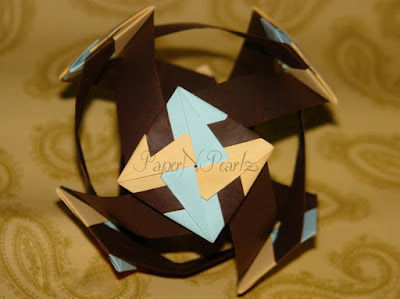The origami sun was one of the designs I started folding in the beginning of the month, but was pleasantly side-tracked into folding a Compass Rose, which to me, looked kinda like the sun!
But I finally got around to folding the sun, designed by Jo Nakashima. It wasn't exactly a piece of cake and I still don't think I have got it quite right. There were a lot of pre-creasings and I think I might have missed out a couple, cos the shape isn't as nice as what Jo Nakashima demonstrates in his video.
The paper I had used was a 4-inch square and the resulting sun was about 3 inches in size.
Model Details:
Model: Sun
Creator: Jo Nakashima
Creator Online: Youtube, Facebook
Difficulty Level: High Intermediate
Paper Ratio: Square
Paper Size: 4 inches
Model Size: ~3 inches
Tutorial: Youtube
But I finally got around to folding the sun, designed by Jo Nakashima. It wasn't exactly a piece of cake and I still don't think I have got it quite right. There were a lot of pre-creasings and I think I might have missed out a couple, cos the shape isn't as nice as what Jo Nakashima demonstrates in his video.
The paper I had used was a 4-inch square and the resulting sun was about 3 inches in size.
Model Details:
Model: Sun
Creator: Jo Nakashima
Creator Online: Youtube, Facebook
Difficulty Level: High Intermediate
Paper Ratio: Square
Paper Size: 4 inches
Model Size: ~3 inches
Tutorial: Youtube














